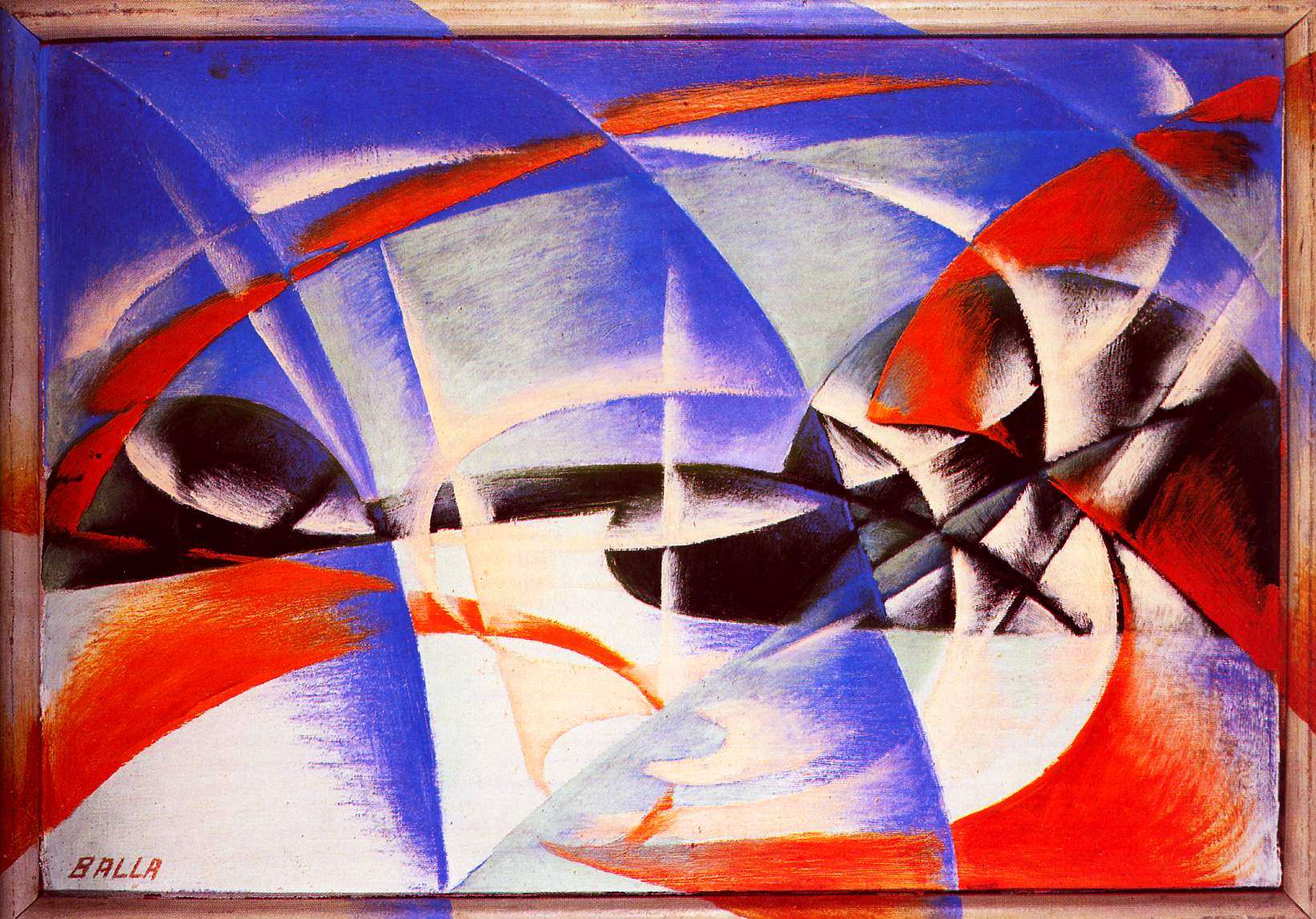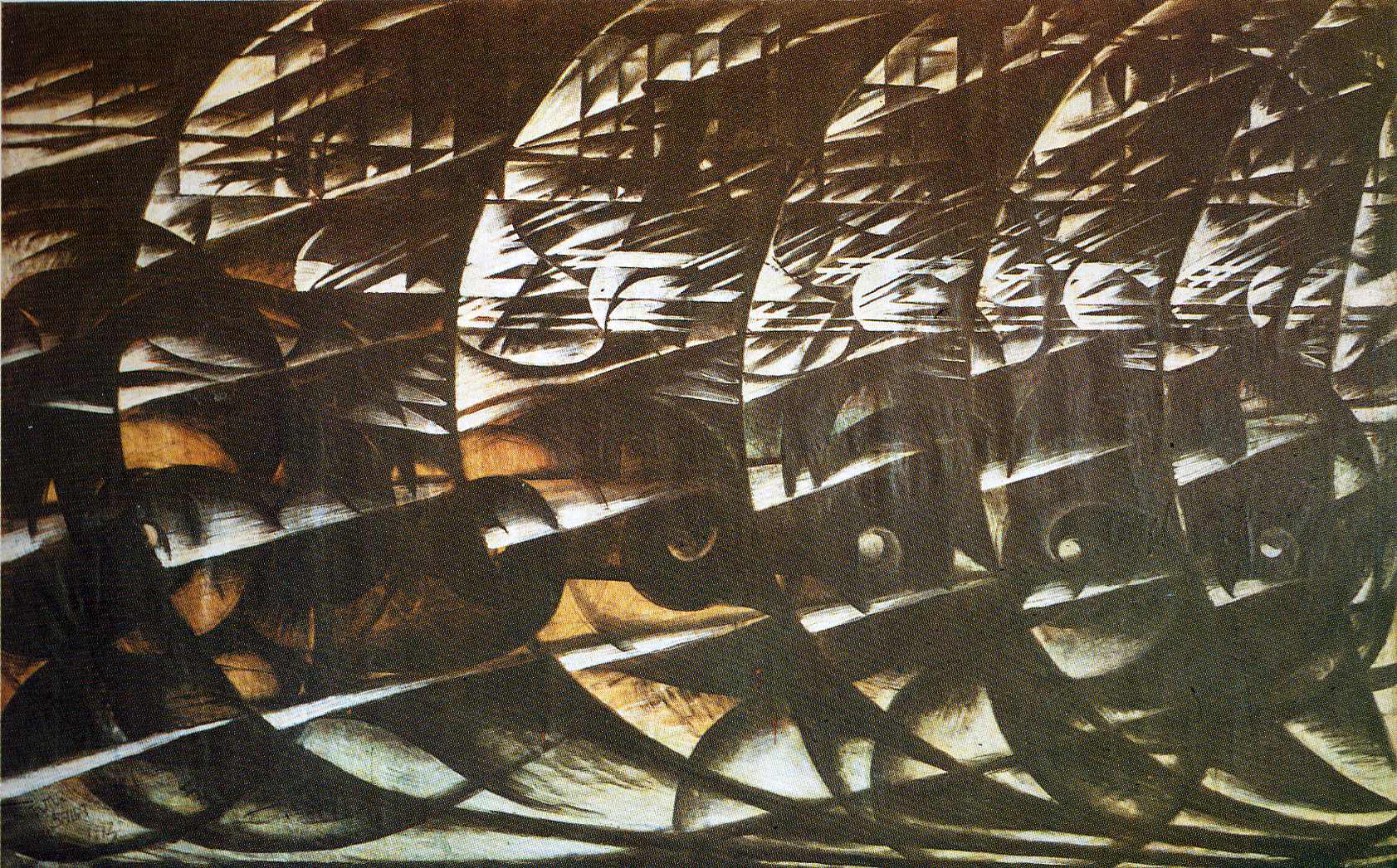Painting and photography allow the artist to capture a moment in time.
That moment is frozen ... or is it? Numerous artists have attempted to
depict motion and to show movement over time. Look at the pictures
below to see all of the different ways that artists have tried to make a
visual suggestion of motion.
In Marcel Duchamp's Nude Descending A Staircase from 1912, the person is painted as if there were multiple depictions of the same person going down the stairs; the viewer can see each step being taken. In Giacomo Balla's Dynamism Of A Dog On Leash, also from 1912, one can almost feel the frantic energy of the little dog, it's feet shuffling quickly, it's tail wagging excitedly, and the hurried footsteps of the person trying to keep up.
Giacomo Balla (18 July 1871 – 1 March 1958) was an Italian painter, art teacher and poet best known as a key proponent of Futurism. In his painting he depicted light, movement and speed.
Unlike most Futurists, Balla was a lyrical painter, unconcerned with modern machines or violence. The Street Light—Study of Light (1909), for example, is a dynamic depiction of light. Despite his unique taste in subject matter, in works such as this Balla conveys a sense of speed and urgency that puts his paintings in line with Futurism’s fascination with the energy of modern life.
One of his best-known works, Dynamism of a Dog on a Leash (1912), shows an almost frame-by-frame view of a woman walking a dog on a boulevard. The work illustrates his principle of simultaneity—i.e., the rendering of motion by simultaneously showing many aspects of a moving object.
This interest in capturing a single moment in a series of planes was derived from Cubism, but it was also no doubt tied to Balla’s interest in the technology of photography.
During World War I Balla composed a series of paintings in which he attempted to convey the impression of movement or velocity through the use of planes of colour; these works are perhaps the most abstract of all Futurist paintings.
After the war he remained faithful to the Futurist style long after its other practitioners had abandoned it. In addition to his painting, during these years he explored stage design, graphic design, and even acting.
At the end of his career he abandoned his lifelong pursuit of near abstraction and reverted to a more traditional style.
The loose geometric patterning of Giacomo Balla’s paintings of motion serve as good examples of Futurist paintings of movement.
Related to the Cubist movement, Futurist art is often extremely abstract and only suggestively representational.
In his masculinely rough and abstract automobile paintings, Balla is keeping in line with the views presented in The Futurist Manifesto and entirely rejecting “beautiful” classic art like the statue Victory of Samothrace.
Without the title to go by, many would have no idea that Balla’s curved black gestural lines are meant to represent “speeding” motorized vehicles.
Balla’s automobiles seem to be moving at a very high velocity, so much so that the viewer won’t even have time to adequately process the sight of the fast-moving vehicle. Balla is trying to represent our blurred and rushed account of the automobiles, therefore partly accounting for the high abstraction of his paintings.
In Marcel Duchamp's Nude Descending A Staircase from 1912, the person is painted as if there were multiple depictions of the same person going down the stairs; the viewer can see each step being taken. In Giacomo Balla's Dynamism Of A Dog On Leash, also from 1912, one can almost feel the frantic energy of the little dog, it's feet shuffling quickly, it's tail wagging excitedly, and the hurried footsteps of the person trying to keep up.
 |
| Giacomo Balla, 1912, Dinamismo di un Cane al Guinzaglio (Dynamism of a Dog on a Leash), Albright-Knox Art Gallery |
Unlike most Futurists, Balla was a lyrical painter, unconcerned with modern machines or violence. The Street Light—Study of Light (1909), for example, is a dynamic depiction of light. Despite his unique taste in subject matter, in works such as this Balla conveys a sense of speed and urgency that puts his paintings in line with Futurism’s fascination with the energy of modern life.
 |
| Abstract Speed - The Car has Passed 1913 |
One of his best-known works, Dynamism of a Dog on a Leash (1912), shows an almost frame-by-frame view of a woman walking a dog on a boulevard. The work illustrates his principle of simultaneity—i.e., the rendering of motion by simultaneously showing many aspects of a moving object.
This interest in capturing a single moment in a series of planes was derived from Cubism, but it was also no doubt tied to Balla’s interest in the technology of photography.
 |
| Giacomo Balla - Landscape - 1913 |
After the war he remained faithful to the Futurist style long after its other practitioners had abandoned it. In addition to his painting, during these years he explored stage design, graphic design, and even acting.
At the end of his career he abandoned his lifelong pursuit of near abstraction and reverted to a more traditional style.
The loose geometric patterning of Giacomo Balla’s paintings of motion serve as good examples of Futurist paintings of movement.
Related to the Cubist movement, Futurist art is often extremely abstract and only suggestively representational.
In his masculinely rough and abstract automobile paintings, Balla is keeping in line with the views presented in The Futurist Manifesto and entirely rejecting “beautiful” classic art like the statue Victory of Samothrace.
Without the title to go by, many would have no idea that Balla’s curved black gestural lines are meant to represent “speeding” motorized vehicles.
Balla’s automobiles seem to be moving at a very high velocity, so much so that the viewer won’t even have time to adequately process the sight of the fast-moving vehicle. Balla is trying to represent our blurred and rushed account of the automobiles, therefore partly accounting for the high abstraction of his paintings.

No comments:
Post a Comment